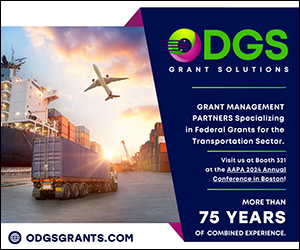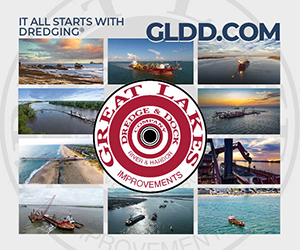“America’s ports work closely with our federal partners to maintain the highest possible standards of physical and cybersecurity,” stated Cary Davis, AAPA President and CEO. “We welcome and applaud President Biden’s actions which further empower the Coast Guard to keep our ports safe along with the Administration’s efforts to build out domestic manufacturing capacity for key equipment.”
The maritime industry is ready and willing to incentivize domestic manufacturing to build port equipment in the United States. AAPA has already
- Drafted a legislative proposal, the Crane Reshoring and National Enforcement of Supply Chain Security (CRANES) Act, to incentivize domestic manufacturing of cranes, similar to Congress’ CHIPS Act. We are calling on Congress to introduce and pass this bill.
- Proactively partnered with the Maritime Administration (MARAD) and is currently conducting a study on the future of port cargo handling equipment procurement needs. The study results will be presented to domestic manufacturers as an order book to show the clear demand for American-manufactured equipment.
|

| |
 |
| |
|
The February 2024 edition of Trade Currents Navigator, a report focusing on trade analysis and monthly forecasts, highlights top containerized commodities affecting ports’ trade volumes. The report addresses containerized trade trends and forecasts through the first quarter of 2025, including:
- The top import and export containerized commodities affecting total containerized trade
- Macroeconomic factors that affect volumes of traded commodities
- Uncertainties that may impact commodities’ containerized trade
- Changes in country origin or destination shares
- Seasonality of containerized commodity trade
In monitoring U.S. container trade, attention is often narrowly focused on the total number of containers (in TEUs) that are handled by ports and inland transportation providers. The number of TEUs is a valuable aggregate measure that can be compared across all U.S. ports, as well as over time, and is the key driver of revenue at container terminals and ports. As such, total TEUs is an important indicator of port performance, an input to short-term operational planning, and a factor in longer-term capacity development and capital investment in ports and inland infrastructure.
Tracking containerized commodities can be very helpful to port operations. These trends translate to different equipment needs. Differences in container types and sizes are critically important to shippers and transportation providers to support specific supply chains and in balancing the flow of containers to meet market needs. An important example is providing U.S. exporters with containers where they are needed, e.g. in agricultural production regions. At the most basic level, how to recycle empty containers back to overseas locations to maintain the global flow of goods is an important logistics issue.
|
The Port of San Diego has approved $2.2 million for the next phase of the Harbor Drive 2.0 and Vesta Bridge projects. Harbor Drive 2.0 will improve Harbor Drive between the port’s two cargo terminals by creating a better truck route for more efficient maritime cargo handling, enhance pedestrian and transit connections, and improve air quality.
|
The Port of Corpus Christi has launched a new public information portal as part of its ongoing commitment to transparency and accountability, making available a multitude of new tools that will improve accessibility to information for requestors. In partnership with CivicPlus, the Port of Corpus Christi is rolling out the new NextRequest for Public Information Requests portal effective today.
|

PortMiami has been named “Best North American Port” by Spain’s Premios Cruceroadicto (Cruise Addict Awards) for the second year in a row. Cruceroadicto Magazine readers and more than 26,000 Cruisers Club members voted for the awards.
|
Maeve Sheehey, Bloomberg
Patrick Whittle, Associated Press
Mike Schuler, gCaptain
Eugene Mulero, Transport Topics
Bill Mongelluzzo, Journal of Commerce
Mike Wackett, The Loadstar
|


|
| |
|

